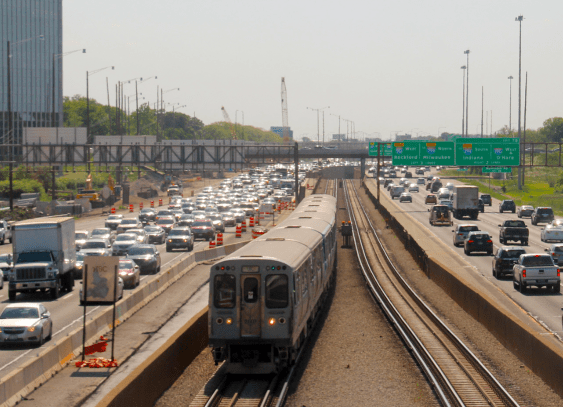- Transit agencies across the country are trying to balance encouraging people to stay home, reassuring those who can’t that transit is safe, and managing loss of revenue in the wake of declining ridership (New York Times).
- Some recent examples: Denver transit ridership is down 60 percent during the coronavirus pandemic (Colorado Politics). Texas transit agencies are getting front-line health care responders and low-income workers to work during the pandemic, but agencies are cutting back service as ridership falls (KSAT). Rock Region Metro in Little Rock is cutting streetcar and bus service, reallocating resources to high-ridership routes in an effort to thin out crowds (Arkansas Democrat-Gazette). And a new policy in Pittsburgh requires bus riders to stay six feet apart (City Paper). In fact, a lot of smaller transit agencies are being hit hard (Streetsblog).
- Biking is the best way to get around during a pandemic — you can socially distance while getting some fresh air and exercise (Outside). If COVID-19 has you wanting to start biking, here’s how (Medium). But as biking spikes during the coronavirus pandemic, it’s exposed the lack of infrastructure in cities like Philadelphia (WHYY) and New York, where injuries are up 43 percent (Streetsblog)
- Lime is pulling e-scooters out of 21 states — California, New York and Texas among them — and 20 countries, including most of Europe, as the coronavirus spreads. (L.A. Times, Streetsblog)
- Uber and Lyft ridership was down 21 percent last week compared to the week before. (Wall Street Journal)
- The coronavirus pandemic is exposing just how dependent autonomous vehicles still are on humans. (The Verge)
- A Transportation Green New Deal would invest billions in transit operations and infrastructure maintenance while diverting a portion of highway funds into Complete Streets. (Smart Cities Dive)
- Electric cars can do more than carry people around — they can serve double duty as home batteries as we transition to renewable energy. (The Driven)
- The New York City subway’s new tap-to-pay system is convenient, but it creates a lot of privacy and data security issues. (The Verge)
- Bogota is quickly opening 47 miles of new bike lanes to help ease crowding on public transportation as it prepares for coronavirus, as well as to improve air quality. (Smart Cities World)
Today's Headlines
Friday’s Headlines From Around the Nation
Stay in touch
Sign up for our free newsletter
More from Streetsblog USA
An Olympian Task: Replicating Paris’s Bike Boom in Los Angeles
The Olympics can help transform the streets of Los Angeles — if they look to the example of Paris.
Wednesday’s Headlines Are a Clear and Present Danger
Rescinding the "endangerment finding" could not only exacerbate climate change, it could also throw entire industries into chaos.
What’s More Regressive: Modest Driving Surcharges to Help Fund Transit, or Forced Car Ownership?
Do Illinois state senators and reps really want to make the financial burden on their constituents less "regressive"? If so they can start by ensuring that as many people as possible can live their lives without spending $12,000 annually just to leave their homes.
Tuesday’s Headlines Pay High Prices for Highway Repairs
If the U.S. didn't spend so much money on repaving roads, there might be more left over for other things, like transit.
Op-Ed: The Norfolk Southern–Union Pacific Merger Is Wrong for Rail
This advocacy organization argues it's time to reject Wall Street's massive power grab and re-nationalize America's rails — before it's too late.
Crunching Numbers to Curb Crashes: Using Federal Data to Make Our Roads Safer
Upholding federal data transparency is key to understanding and reversing the alarming level of crashes, fatalities, and strained infrastructure. Here's where we have more work to do.





